 Indians Archive
Indians Archive  Cleveland Indians Top 50 Prospects: #41-50
Cleveland Indians Top 50 Prospects: #41-50
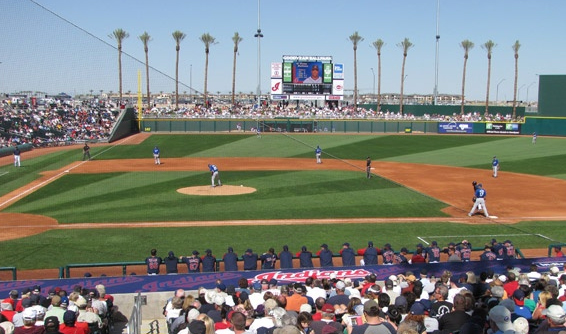 The Cleveland Indians have built, in my opinion, one of the deepest minor league systems in baseball. The top six or seven guys have a great chance to make all star teams, although none of them compares to last year’s #1 player in the system, catcher Carlos Santana. Santana’s upside is unmatched in the organization, and was a top-10 player in all of the minor leagues going into 2010. So the lack of a “Santana” type player is an issue for most organizations around baseball, not just Cleveland’s.
The Cleveland Indians have built, in my opinion, one of the deepest minor league systems in baseball. The top six or seven guys have a great chance to make all star teams, although none of them compares to last year’s #1 player in the system, catcher Carlos Santana. Santana’s upside is unmatched in the organization, and was a top-10 player in all of the minor leagues going into 2010. So the lack of a “Santana” type player is an issue for most organizations around baseball, not just Cleveland’s.
What the Indians do have is an extraordinarily deep system that should crank out a large number of major league baseball players. There are legitimately 40 or more guys in this system right now that could play in the major leagues someday. Not many systems in baseball can make that claim. As I indicated a few weeks ago in my piece about the future of the major league bullpen, having a plethora of internal replacements around the diamond provides three invaluable services for the big league team. One, it allows for cheap replacement options if the players in Cleveland falter or are injured. Two, it helps preclude the need to trade valuable prospect chips under club control for replacement-level veterans. And three, it provides trade ammo for the team if they do feel like they are close enough that one or two players will make the difference between a playoff and non-playoff season.
With such a deep system comes a real challenge in ranking players. I have been moving guys around as recently as yesterday, and the list I had before I started writing up the scouting reports is pretty different than the list I finished up with. There isn’t a huge difference between the #25 and #50 guys on this list, and that is not a slight at the guys in the 20’s. It’s a testament to the guys down in the 40’s and 50’s, many of whom will at least get a cup of coffee in the majors if not more. Very, very few organizations in baseball can say that. I’m going to keep saying it because it’s impossible to stress this point enough…the Indians have the deepest system in baseball right now. It lacks the star power of a system like Kansas City’s, but will undoubtedly produce more major league players than the Royals will.
I have seen most, but not all of these players in person, some more than others. These rankings are my own, but I heavily considered the input of three people in particular when putting them together. First, Tony Lastoria over at IPI, who probably knows more about the Indians system than anyone outside of the organization. Second, BaseballProspectus.com minor league guru Kevin Goldstein, whose opinions I value very much. Third, ESPN.com insider Keith Law, who is snarky and sarcastic but really knows talent when he sees (or doesn’t see) it. I of course don’t always agree with everything they all say, but I consider their info and opinions when forming my own rankings. This list would be radically different without the writings of those three, and for that I thank them.
Before we get to players 41-50 in the Indians system, here’s a look at some of the best individual tools that the Indians’ farm teams have to offer:
Best hit tool: Lonnie Chisenhall
Best raw power: Nick Weglarz
Best athlete: LeVon Washington
Fastest runner: LeVon Washington
Best infield defender: Kyle Bellows
Best outfield defender: Jordan Henry
Best defensive catcher: Roberto Perez
Best fastball: Jason Knapp/Bryce Stowell
Best secondary offering: Alex White (splitter)/Drew Pomeranz (curveball)
Strength of the system: Power bullpen arms
Weakness of the system: Power bats at CI and OF
So now let’s start the countdown. To be eligible for this list, players have to have fewer than 130 major league at bats and fewer than 50 major league innings pitched. We’ll be counting down from #50 to #1 all this week here at TCF, with the top 5 announced next Tuesday. So check back every day for each installment. I hope you all have as much fun reading this list as I had putting it together.
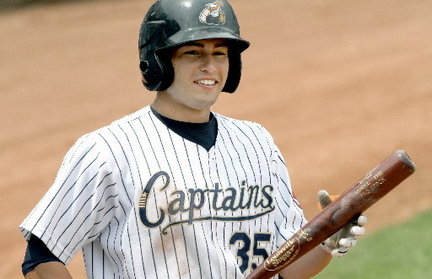 41. Bo Greenwell, OF
41. Bo Greenwell, OF
DOB: 10/15/1988
Height/Weight: 6-0/185
Bats/Throws: L/L
Acquired: 6th round pick in 2007
2010 Stats: .301/.380/.395 with 6/57 and 25 SB between low A Lake County and high A Kinston
Scouting report: The son of former major leaguer Mike Greenwell, Bo had a solid 2010 campaign in the OF between two A levels. He started out very hot for Lake County, putting up a .823 OPS and hitting 4 of his 6 HR in his 248 at bats in low A. He was quickly moved up to Kinston, where he struggled initially, but rebounded to finish out his high-A campaign with a .727 OPS. He’s a plus runner who takes good routes to balls in the OF, and has good instincts on the bases. He swiped 25 bags last year while being caught 11 times, and you can expect that ratio to improve over time.
Greenwell doesn’t have a lot of pop, but does a good job of putting the ball in play and using his speed on the bases. He has a short, compact stroke from the left side and does a pretty good job of squaring up the baseball. He’ll never be a middle of the order hitter, but has enough doubles power, speed and OBP skills that he could be a solid 2-hole guy. He’s wiry strong and has worked to add some bulk to his frame, but he’s still not a big guy.
Drafted straight out of high school, Greenwell was actually split between pursuing a path in baseball or football until an injury prior to his senior year pushed him more towards baseball. The Indians were able to sign him away from a full ride to “The U” where he would have played baseball. So 2010 was really only his 3rd season focusing primarily on baseball. While he has good baseball instincts and was obviously around the game a lot as a kid, he still has some growing to do with fundamentals. He has an average arm, and throws more sidearm than over the top and can sometimes struggle with his accuracy. He’s not quite good enough defensively to project as an everyday CF at this point in his career, but his bat profiles much better there than as a corner OF.
Greenwell spent a half-season in Kinston in 2010, and the smart money is for him to open there again in what could be a crowded OF.
Glass half-full: An average defensive CF with decent speed who gets on base.
Glass half-empty: A good defensive LF that never hits enough to be an everyday player. Trevor Crowe, without the 1st round pedigree.
42. Alexander Perez, RHP
DOB: 07/24/1989
Height/Weight: 6-2/156
Bats/Throws: R/R
Acquired: International FA in 2007
2010 Stats: 0-1, 2.70 ERA, 8 K and 2 BB in 6 2/3 IP for high A
Scouting report: Perez is a young, skinny right-hander out of the Dominican Republic. His fastball sits in the high-80s to low-90s, but once he adds some weight and strength in his lower half that number should increase. His best pitch is his curveball, which he commands well and is tight and fast enough to be more of a slurve. In addition to the fastball and curveball, he throws a changeup but that pitch still has a ways to go before it becomes a consistent offering. He has above-average command, and has posted a 3.56 K/BB rate in 221 career innings as a professional.
Perez tried to fight through a bout of elbow tendinitis in early 2010, but eventually succumbed to the injury and underwent Tommy John surgery in May of 2010. He will likely be back on the mound at some point in 2011, but his assignment will depend on how his rehab goes. Best-case scenario, Perez gets to pitch some meaningful innings for Kinston down the stretch. Worst-case, he comes back a little more slowly and pitches in Arizona. Either way, he’s just 21 years old, so even with the season lost to injury he’s not behind the developmental curve. He’s a projectable arm, as he’s proven to be able to get hitters out without elite stuff, so if he comes back from TJ surgery with a couple added MPH on his fastball, he could easily jump 20 spots on next year’s list.
Glass half-full: Perez gets healthy, adds a few MPH to his fastball and becomes a middle of the rotation option down the road
Glass half-empty: His velocity has peaked, injury issues continue to plague him and he never pitches above Akron.
43. T.J McFarland, LHP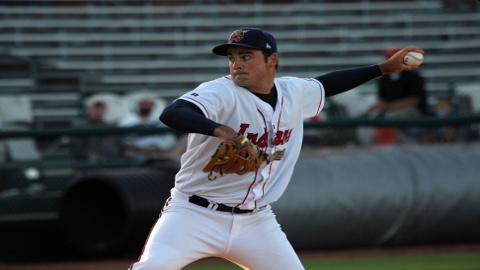
DOB: 6/8/1989
Height/Weight: 6-3/190
Bats/Throws: L/L
Acquired: 4th round pick in 2007
2010 Stats: 11-5, 3.38 ERA, 97 K and 42 BB in 130 2/3 IP between high A and AA
Scouting report: McFarland pitched nearly all of 2010 in Kinston, throwing just 4 innings in his lone start for AA Akron. He was one of the most consistent pitchers in the Kinston rotation all year long. His most consistent offering is his two-seam, low-90s sinking fastball. It sits consistently in the low-90s, and can touch 94. His best secondary offering is his slider which is average, and he also throws a changeup that’s still a work in progress. He’s not a big strikeout guy, and pitches to contact to try and have hitters get themselves out. He had one of the better grounder rates in the system, with a 2.25 GO/AO rate.
McFarland is still young, having been drafted right out of high school. The Indians are hopeful that his arm is still developing, and that there’s still another couple of MPH to be added to his fastball. His secondary offerings are solid for a kid with his experience, as 2011 would be his senior year in college if he had gone that route. He needs to add some strength and weight to his frame and continue to develop his changeup if he wants to remain a starter. If he can start missing some more bats, he could be a solid middle of the rotation piece down the road.
McFarland should open 2011 in the AA Akron rotation. He won’t turn 22 until partway through the 2011 season, so there’s really no reason to rush him. He’ll likely spend all of 2011 in AA, and if he can repeat the success he had at high A then that would set him up for a look with the big club as soon as 2013.
Glass half-full: A middle of the rotation innings eater, but probably never a star-level starter.
Glass half-empty: He could still end up in the bullpen without a 3rd pitch.
44. Jeremie Tice, 1B
DOB: 9/25/1986
Height/Weight: 6-1/225
Bats/Throws: R/R
Acquired: 6th round pick in 2008
2010 Stats: .282/.380/.470 with 14/79 in 436 at bats between low A and high A.
Scouting report: Tice was drafted as a 3B out of the College of Charleston, and played both CI positions last year between Lake County and Kinston. Once he got to Kinston, he was relegated to 1B full time due to the presence of Kyle Bellows at 3B, who is as good of a defensive 3B you will find in the minor leagues. Tice is a good athlete who played all around the diamond in college and should be a solid defender at 1B.
Tice has plus power, and in his first season hitting with wood he managed 14 HR and an OPS over .800. He projects to have 20+ HR power down the road, and could even be a 30 HR guy. He did strike out 106 times last year against just 31 walks, so he has to work on pitch selection/recognition and refine his approach a little if he wants to move up. Power hitters that strike out 100+ times are not unheard of, but the walks have to come up to help compensate for the swings and misses.
Tice should begin 2011 back in high A Kinston as the regular 1B and hitting in the middle of the lineup. First base is not exactly the most loaded position in the system, with the likes of Beau Mills, Jordan Brown and Wes Hodges getting the majority of the 1B at bats in the levels above him. If Tice can cut down on the K’s and walk a little more, he has a chance to be one of the more powerful bats in the system.
Glass half-full: Tice hits 25+ HR and provides plus defense at 1B.
Glass half-empty: A bench bat with some pop.
45. Cole Cook, RHP
DOB: 10/18/1988
Height/Weight: 6-6/200
Bats/Throws: R/R
Acquired: 5th round pick in 2010
2010 Stats: 0-3, 5.40 ERA, 14 K and 8 BB in 15 IP for short season Mahoning Valley
Scouting report: Cook is a big, imposing right-hander with a low-90s fastball. He can touch the mid-90s at times, and the ball looks a lot faster coming from a guy who is 6’6” and can pitch with that kind of leverage. He also throws a slider, splitter and a changeup, so he has a starter’s arsenal. The best of those secondary offerings right now is his splitter, which has good down action. His slider can flash plus, but it can also flatten out in the zone and get hit hard.
Cook missed all of his freshman season with a broken arm, so he’s about a season behind where he should be as he only played 2 years at Pepperdine before being drafted. He has a lot of room to grow, and can add some weight onto his frame and pick up a couple MPH on his fastball. He’s all about projection at this point, and is definitely a guy to keep an eye on early in 2011 to see how he’s progressing in his first full year as a pro.
The Indians will give Cook a chance to start, probably starting him off in rotation at Lake County. His performance there will dictate whether he eventually moves up to Kinston as a starter or as a reliever. The development/refinement of his slider is key. His splitter is already plus, and if he picks up a couple of MPH on his fastball that could become a plus offering as well. But there aren’t many starters with just two pitches, no matter how good they are.
Glass half-full: Cook masters his slider and uses his 4-pitch mix and size to be an effective starting pitcher
Glass half-empty: Cooks slider continues to be inconsistent and he’s relegated to a bullpen role down the road.
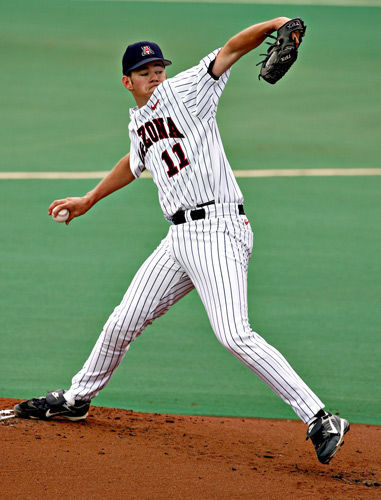 46. Preston Guilmet, RHP
46. Preston Guilmet, RHP
DOB: 7/27/1987
Height/Weight: 6-2/200
Bats/Throws: R/R
Acquired: 9th round pick in 2009
2010 Stats: 4-1, 11 SV, 2.25 ERA, 79 K and 10 BB in 52 IP for low A Lake County
Scouting report: Guilmet came out of nowhere to post one of the more impressive stat lines for any reliever in the system in 2010. A starter in college, Guilmet pitched out of the rotation for short season Mahoning Valley in 2009 after he was drafted. His numbers there were solid, but nothing special. He was moved to the bullpen before the 2010 season, and it proved to be the right decision in a hurry. Guilmet was lights-out for the Midwest League champion Captains, and was even better in the playoffs than he was in the regular season. For the MWL playoffs, Guilmet appeared in 6 games, recorded 5 saves and struck out 19 in 11 2/3 IP without allowing a run. In the clincher for the Captains, he pitched the final 3 innings, striking out five and allowing just one baserunner.
Guilmet’s fastball tops out in the very low-90s, and for the most part sits in the upper-80s. He commands it well, and uses it to get ahead of hitters and then attacks them with his off-speed stuff. He throws a nasty splitter/forkball that hitters sometimes swing at even as it is bouncing on home plate. The pitch has outstanding action mainly due to Guilmet’s straight over-the-top arm angle. He comes to the plate with a very high release point that hides the ball well and gets outstanding down action on his pitches. He also throws a decent slider, but the splitter is his real out pitch.
Guilmet is a tough guy to rank from a prospect perspective. His stuff is not overpowering, and he was pitching in low A as a 22-year old so that has to be taken into account as well. But the numbers say that he was simply dominant, and 79 K/10 BB in 52 IP is pretty hard to overlook. I’ll be interested to see if hitters in high A continue to chase his splitter or simply lay off of it and wait for him to come into the zone with his fastball. Guilmet should start 2011 in Kinston, and will likely get the first shot at the closer role for the K-Tribe. If he can stay in that role and put up similar numbers next year, then Guilmet could be 20 or 30 spots higher on this list come next spring.
Glass half-full: Guilmet picks up a couple MPH on his fastball and his splitter continues to give hitters fits
Glass half-empty: Hitters start to tee off on his fastball and he’s relegated to low pressure relief roles.
47. Chris Jones, LHP
DOB: 9/19/1988
Height/Weight: 6-2/165
Bats/Throws: L/L
Acquired: 15th round pick in 2007
2010 Stats: 6-5, 3 SV, 2.51 ERA, 85 K and 29 BB in 89 2/3 IP between low A and high A
Scouting report: Jones is one of the few left-handed relievers in the pipeline right now. He throws a fastball, curveball and changeup. He primarily uses the fastball and curveball, as the changeup is still a below average pitch but is developing. His fastball sits in the low-90s with some movement. His best pitch is his curveball, which is devastating to left-handed batters and generates lots of swings and misses. The development of the changeup will be the key to Jones’ future…if it matures and becomes a real option for him, then he should be able to get both lefties and righties out.
Jones opened up 2010 in low A Lake County, and was outstanding. He recorded 20 K and allowed just 2 BB in 22 innings of work, which is an amazing ratio. He moved up to Kinston, and for the most part his numbers actually got better in high A. His ERA went down, K/9 went up and HR/9 went down. His BB/9 went up, but walking just 2 guys in 22 innings is not really sustainable. He took part in the combined no-hitter that Kinston threw last September, throwing two innings and earning the victory in the game. His numbers as a 21-year old in Kinston were solid, and lefties with quality breaking balls can have long, productive careers pitching an inning or less. Just ask Jesse Orosco.
Jonsey will likely begin 2011 back in Kinston, but has a great chance to pitch his way to AA Akron at some point next season.
Glass half-full: Jones develops a changeup and can be effective against hitters on both sides of the plate.
Glass half-empty: He’s a LOOGY.
48. Zach McAllister, RHP
DOB: 12/8/1987
Height/Weight: 6-5/230
Bats/Throws: R/R
Acquired: PTBNL in the Austin Kearns deal, originally a 3rd round pick of the Yankees in 2006
2010 Stats: 9-12, 5.29 ERA, 99 K and 45 BB in 149 2/3 IP for AAA Scranton and AAA Columbus
Scouting report: McAllister is a big guy, but doesn’t have typical “big guy” stuff. He’s more of a finesse/command and control guy whose fastball sits in the high 80s to low 90s and can touch 93. It has good natural sink, which is embellished by his height and the downward plane that he works from on the hill. He throws a curveball and a slider, both of which are solid offerings but will never be plus major league pitches. He has a decent changeup as well, and uses the four pitch mix to keep hitters off balance.
McAllister has a very clean, repeatable delivery and a rubber arm. He flew through the Yankees system, and pitched all of 2010 as a 22-year old in AAA. There’s not a lot of projection there, as at this point he is seen as an “is what he is” type of guy. He has posted low ERA as well as low strikeout numbers throughout his career, until of course last year when he hung up a 5+ ERA at AAA.
McAllister is one of the guys who will go into spring training with a shot at the 5th starter job in Cleveland. He’ll more than likely be in the AAA Columbus rotation when the team breaks camp, but will also more than likely get a spot start or two in Cleveland before the season is over.
Glass half-full: An innings eater at the back end of a MLB rotation
Glass half-empty: An innings eater at the back end of a AAA rotation
49. Matt McBride, OF/1B
DOB: 5/23/1985
Height/Weight: 6-2/215
Bats/Throws: R/R
Acquired: 2nd round pick in 2006
2010 Stats: .279/.335/.479 with 21/75 in 480 at bats between AA and AAA
Scouting report: McBride is a versatile, athletic player that has played both CI positions, both corner OF positions and caught in his minor league career. He’s an extremely streaky hitter, and he can put a team on his back for weeks at a time or drag a lineup down for weeks at a time. His bat would be much better if he could have stuck behind the plate, but repeated shoulder issues forced the organization to move him to 1B/OF. He has good pop in his bat, but isn’t a great overall hitter as he tends to lunge at the ball and sometimes tries to pull everything. He doesn’t have a great approach, and his career minor league OBP is just .346. As a soon to be 26 year old, he should be more patient and be able to take more walks.
McBride moved up to AAA Columbus last year after a hot start for AA Akron. Once in Columbus, his bat cooled a little and he finished the AAA season with a .716 OPS in 119 at bats for the Clippers. He’s had success in the past when repeating a level, so there’s a chance that McBride could come out and set the world on fire in Columbus similar to what Jared Goedert did last year.
McBride will likely be back in Columbus for the start of the 2011 season. His prospect clock is ticking, as he’ll play most of 2011 as a 26-year old. If he doesn’t force his way onto the Cleveland roster this year, it will be more and more difficult to get a shot over younger, talented players as he gets older.
Glass half-full: A versatile bench bat with some pop
Glass half-empty: A versatile AAAA bat with some pop
50. Roberto Perez, C
DOB: 12/23/1988
Height/Weight: 6-0/200
Bats/Throws: R/R
Acquired: 33rd round pick in 2008
2010 Stats: .217/.360/.339 with 6/38 in 378 at bats for low A Lake County
Scouting report: Any discussion of Perez’s prospect standing begins and ends with his defense. He has the tools to be an elite defensive catcher at the major league level. He’s an above-average receiver, has an outstanding arm, a quick release and does a great job handling pitchers. He blocks pitches in the dirt extremely well and is a leader behind the dish. A whopping 125 runners tried to steal on him in 2010, and he threw out 50 of them. He loves to throw behind the runner at 1B, and picks off more than his share of guys who fall asleep on the bases. He is definitely a guy who can play in the major leagues defensively, and sooner rather than later.
So if he’s that great of a defensive catcher, and catcher is the most important position on the field defensively, why is Perez my 50th ranked prospect? Well, to put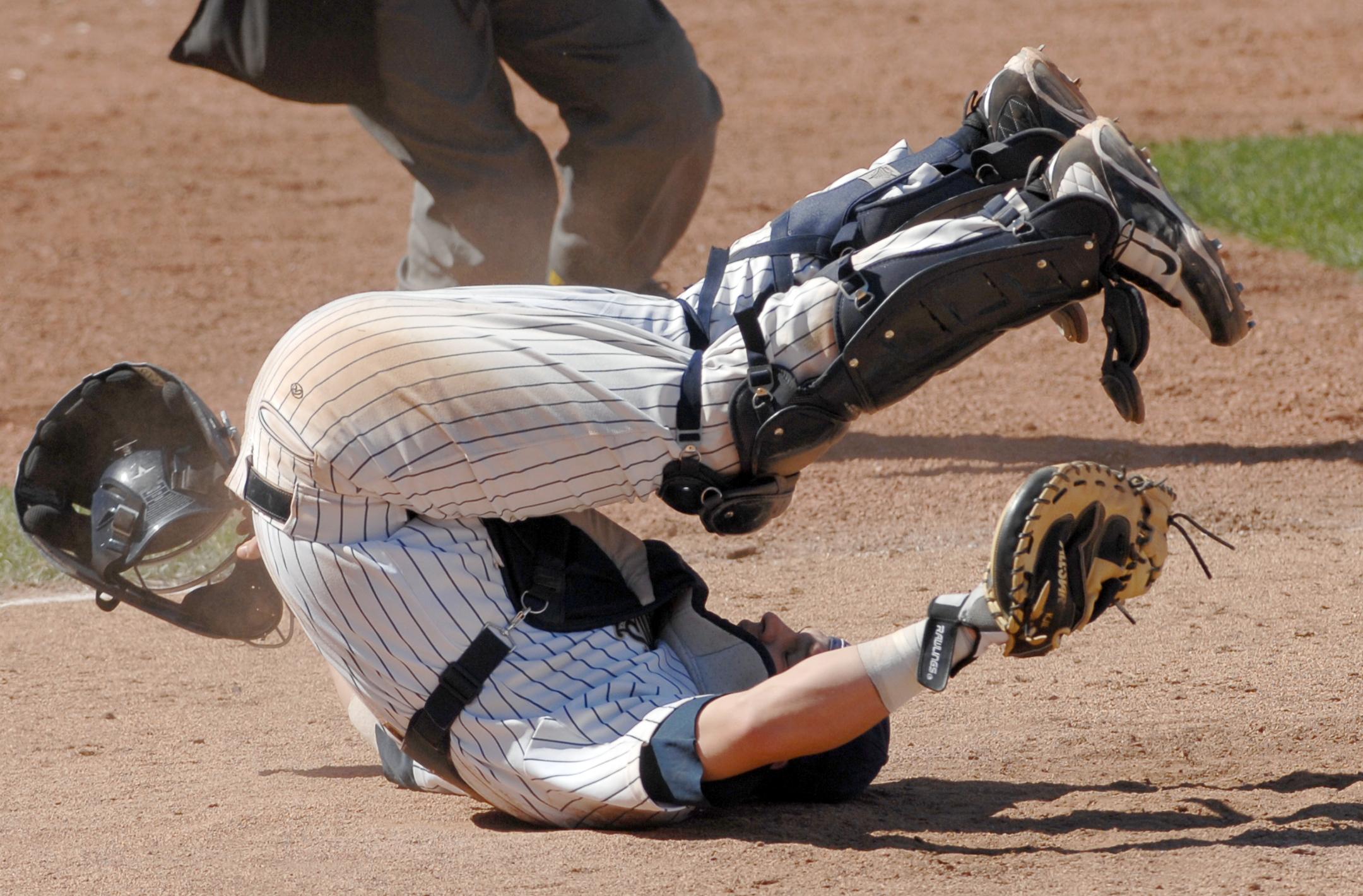 it mildly, Perez struggles at the plate. His OPS last year as a 21 year old in low A Lake County was .699. He has a little pop in his bat with 6 HR, but struggles to make consistent contact. He does have a good approach, as he walked 80 times last year which helped him post a solid .360 OBP despite a .217 batting average.
it mildly, Perez struggles at the plate. His OPS last year as a 21 year old in low A Lake County was .699. He has a little pop in his bat with 6 HR, but struggles to make consistent contact. He does have a good approach, as he walked 80 times last year which helped him post a solid .360 OBP despite a .217 batting average.
There are a lot worse things than a backup catcher who can control the opposing team’s running game and take a walk at the plate. If Perez can continue to get on base at a .350 or better clip throughout the minors, he could have a long career as a backup catcher at the major league level. Catcher isn’t an offense-oriented position anyway, so there’s a better than average chance that Perez makes it to the show at some point in his career. But then we also see guys like Wyatt Toregas, who has a similar skill set, just never really get that opportunity because of the numbers game at the higher levels. Regardless, Perez should play all of 2011 at high A Kinston in the pitcher-friendly Carolina League. Keep your eye on his caught stealing % and OBP, because those are the two numbers that will determine what kind of career Perez has, if any.
Glass half-full: Perez uses his defense to become a serviceable backup catcher in the major leagues
Glass half-empty: Perez never does enough with the bat to get a shot in the show, even as a backup
- NBA Announces 2013-2014 Schedule
- Browns Ink Sharknado
- Sharknado A No-Show For Rookie Camp
- Trent Richardson Out Until Training Camp
- Browns Sign Brandon Jackson
- Carrasco Suspended Eight Games
- Browns Add to Wide Receiver Depth with David Nelson
- Browns Need to Learn from Past Draft Mistakes
- Browns Release Chris Gocong and Usama Young
- Browns Missing on Grimes Disappointing, But Not The End
The TCF Forums
- Chris Grant's first 3 drafts
Kingpin74 (Tuesday, January 21 2014 10:13 AM) - The 2014 Offseason Thread
googleeph2 (Tuesday, January 21 2014 9:36 AM) - 2015 Recruiting
furls (Tuesday, January 21 2014 6:57 AM) - Mike Brown
YahooFanChicago (Monday, January 20 2014 11:15 PM) - Movies coming out
HoodooMan (Monday, January 20 2014 9:34 PM) - 2014 Hoops Hockey Hijinx
jpd1224 (Monday, January 20 2014 4:44 PM) - 2014 Recruiting
jclvd_23 (Monday, January 20 2014 2:26 PM) - Wish List - #4 Pick
Hikohadon (Monday, January 20 2014 1:26 PM) - Official- Browns Coach Search/Rumors
OldDawg (Sunday, January 19 2014 6:48 PM) - #1 overall pick Anthony Bennett
TouchEmAllTime (Sunday, January 19 2014 1:28 PM)



